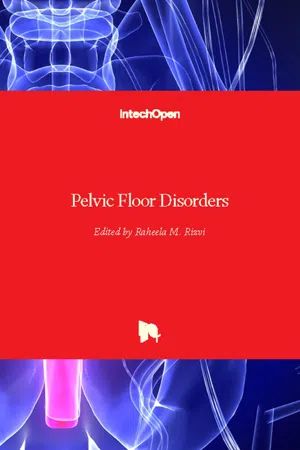Pelvic Floor Disorders
About this book
Pelvic floor disorders, which include urinary and fecal incontinence and pelvic organ prolapse, are highly prevalent conditions in women. In the United States alone, this affects almost 25% of women. These disorders often affect women's daily life activities, their sexual function, their ability to exercise, and their social and psychological life. Pelvic floor disorders are usually diagnosed clinically, but in complicated cases, pelvic imaging and electromyographic studies may be required. This book attempts to discuss the pathophysiology of pelvic floor disorders, its treatment by the use of a new synthetic material, and treatment for recurrent POP. Although there are many books available on this topic, it includes some of the original research work and surgical innovation. We would like to acknowledge all the authors for their hard work in completing this book.
Frequently asked questions
- Essential is ideal for learners and professionals who enjoy exploring a wide range of subjects. Access the Essential Library with 800,000+ trusted titles and best-sellers across business, personal growth, and the humanities. Includes unlimited reading time and Standard Read Aloud voice.
- Complete: Perfect for advanced learners and researchers needing full, unrestricted access. Unlock 1.4M+ books across hundreds of subjects, including academic and specialized titles. The Complete Plan also includes advanced features like Premium Read Aloud and Research Assistant.
Please note we cannot support devices running on iOS 13 and Android 7 or earlier. Learn more about using the app.
Information
Table of contents
- Pelvic Floor Disorders
- Contents
- Preface
- Chapter 1 Introductory Chapter: Pelvic Floor Disorders
- Chapter 2 Pathophysiology of Pelvic Organ Prolapse
- Chapter 3 Effects of Posture and Gravity on Pelvic Organ Prolapse
- Chapter 4 Synthetic Materials Used in the Surgical Treatment of Pelvic Organ Prolapse: Problems of Currently Used Material and Designing the Ideal Material
- Chapter 5 Recurrent Pelvic Organ Prolapse
